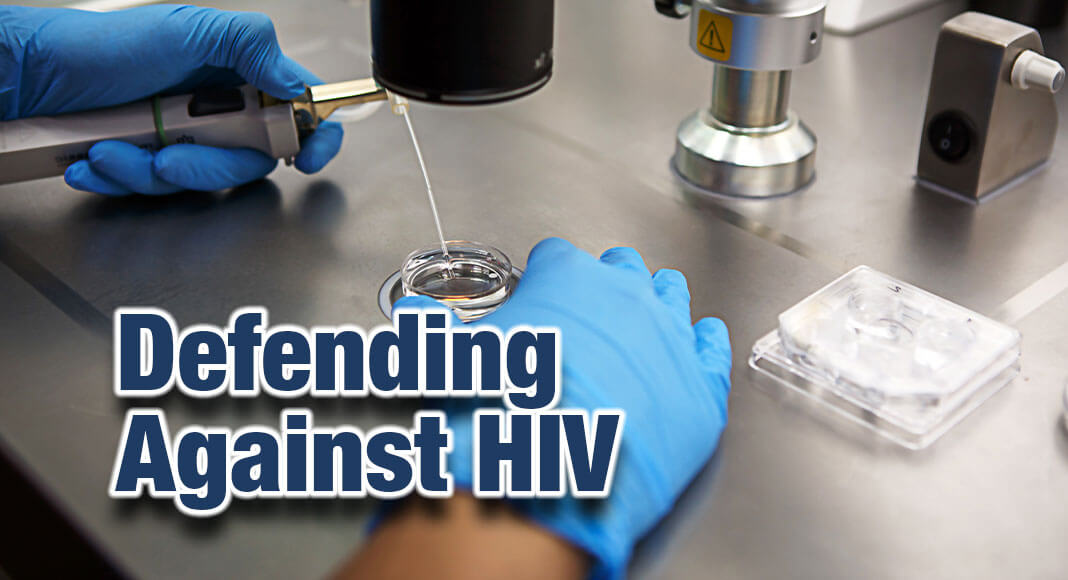
Mega Doctor News
Newswise – LA JOLLA, CA – Human immunodeficiency virus 1, more commonly known as HIV-1, is known for its uncanny ability to evade the immune system. Scientists at Scripps Research and collaborators have now uncovered how our innate immune system – the body’s first line of quick defense in attacking foreign invaders – detects HIV-1, even when the virus is present in very small amounts.
The findings, published on July 8, 2022, in Molecular Cell, reveal the two-step molecular strategy that jolts the innate immune response into action when exposed to HIV-1. This discovery could impact drug development for HIV treatments and vaccines, as well as shape our understanding of how the innate immune response is implicated in other areas – including neurodegenerative disorders such as Alzheimer’s.
“This research delineates how the immune system can recognize a very cryptic virus, and then activate the downstream cascade that leads to immunological activation,” says Sumit Chanda, PhD, professor in the Department of Immunology and Microbiology. “From a therapeutic potential perspective, these findings open up new avenues for vaccines and adjuvants that mimic the immune response and offer additional solutions for preventing HIV infection.”
The innate immune system is activated before the adaptive immune system, which is the body’s secondary line of defense that involves more specialized functions, such as generating antibodies. One of the innate immune system’s primary responsibilities is recognizing between “self” (our own proteins and genetic material) and foreign elements (such as viruses or other pathogens). Cyclic GMP-AMP synthase (cGAS) is a key signaling protein in the innate immune system that senses DNA floating in a cell. If cGAS does detect a foreign presence, it activates a molecular pathway to fight off the invader.
However, because HIV-1 is an RNA virus, it produces very little DNA – so little, in fact, that scientists have not understood how cGAS and the innate immune system are able to detect it and distinguish it from our own DNA.
Scripps Research scientists discovered that the innate immune system requires a two-step security check for it to activate against HIV-1. The first step involves an essential protein – polyglutamine binding protein 1 (PQBP1) – recognizing the HIV-1 outer shell as soon as it enters the cell and before it can replicate. PQBP1 then coats and decorates the virus, acting as an alert signal to summon cGAS. Once the viral shell begins to disassemble, cGAS activates additional immune-related pathways against the virus.
The researchers were initially surprised to find that two steps are required for innate immune activation against HIV-1, as most other DNA-encoding viruses only activate cGAS in one step. This is a similar concept to technologies that use two-factor authentication, such as requiring users to enter a password and then respond to a confirmation email.
This two-part mechanism also opens the door to vaccination approaches that can exploit the immune cascade that is initiated before the virus can start to replicate in the host cell, after PQBP1 has decorated the molecule.
“While the adaptive immune system has been a main focus for HIV research and vaccine development, our discoveries clearly show the critical role the innate immune response plays in detecting the virus,” says Sunnie Yoh, PhD, first author of the study and senior staff scientist in Chanda’s lab. “In modulating the narrow window in this two-step process – after PQBP1 has decorated the viral capsid, and before the virus is able to insert itself into the host genome and replicate – there is the potential to develop novel adjuvanted vaccine strategies against HIV-1.”
By shedding light on the workings of the innate immune system, these findings also illuminate how our bodies respond to other autoimmune or neurodegenerative inflammatory diseases. For example, PQBP1 has been shown to interact with tau – the protein that becomes dysregulated in Alzheimer’s disease – and activate the same inflammatory cGAS pathway. The researchers will continue to investigate how the innate immune system is involved in disease onset and progression, as well as how it distinguishes between self and foreign cells.
In addition to Yoh and Chanda, authors of the study, “Recognition of HIV-1 Capsid Licenses Innate Immune Response to Viral Infection,” include Na Rae Ahn and Heather Curry of Scripps Research; João I. Mamede of Northwestern University and Rush University Medical Center; Gianguido C. Cianci, Lacy M. Simons, Judd F. Hultquist and Thomas J. Hope of Northwestern University; Derrick Lau, Andrew Tuckwell and Till Böcking of the University of New South Wales; Maria T Sánchez-Aparicio and Adolfo García-Sastre of the Icahn School of Medicine at Mount Sinai; Joshua Temple and Yong Xiong of Yale University; Nina V. Fuchs and Renate König of Paul-Ehrlich-Institute; Stéphanie Gambut of Rush University Medical Center; Laura Riva of Calibr; and Xin Yin of the Harbin Veterinary Research Institute.
Funding was provided by NIAID of the National Institutes of Health, the Gilead Sciences Research Scholars Program in HIV and the German Research Foundation.
About Scripps Research
Scripps Research is an independent, nonprofit biomedical institute ranked the most influential in the world for its impact on innovation by Nature Index. We are advancing human health through profound discoveries that address pressing medical concerns around the globe. Our drug discovery and development division, Calibr, works hand-in-hand with scientists across disciplines to bring new medicines to patients as quickly and efficiently as possible, while teams at Scripps Research Translational Institute harness genomics, digital medicine and cutting-edge informatics to understand individual health and render more effective healthcare. Scripps Research also trains the next generation of leading scientists at our Skaggs Graduate School, consistently named among the top 10 US programs for chemistry and biological sciences. Learn more at www.scripps.edu.











